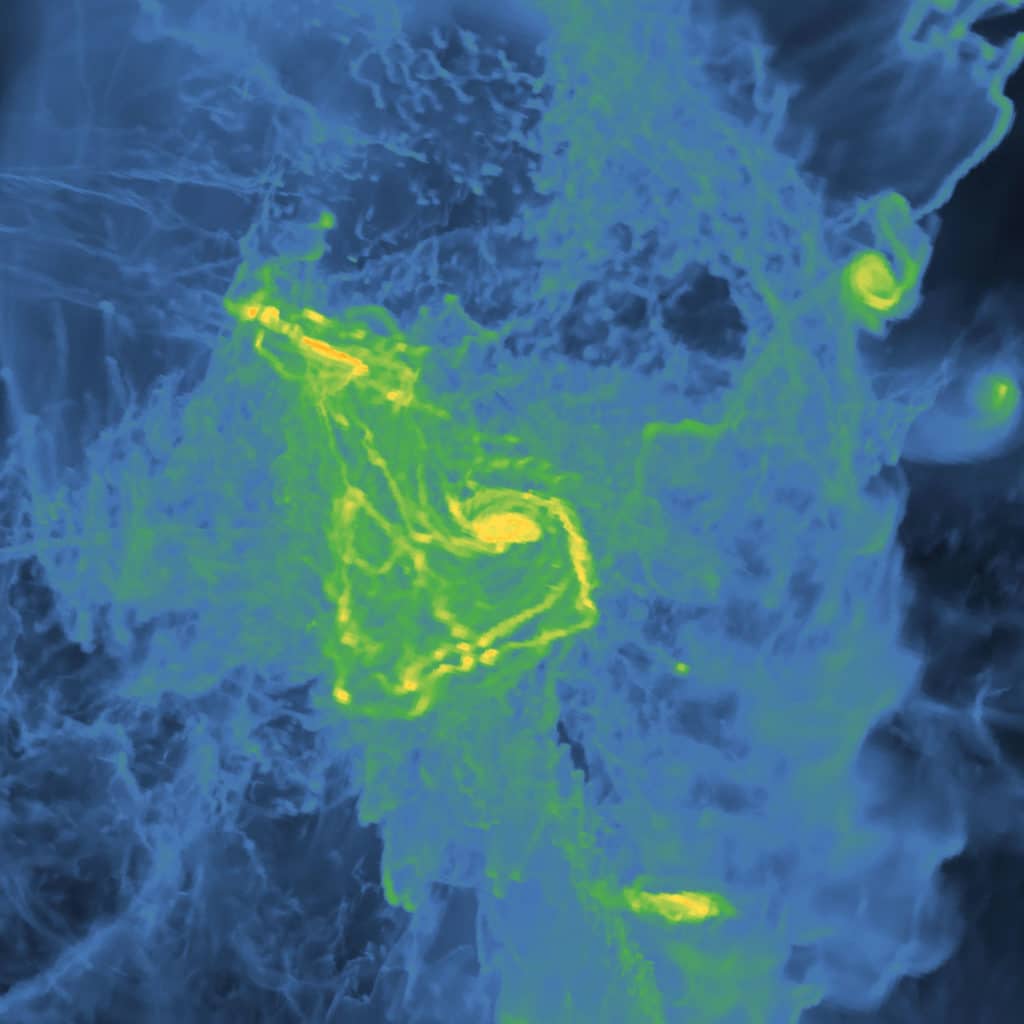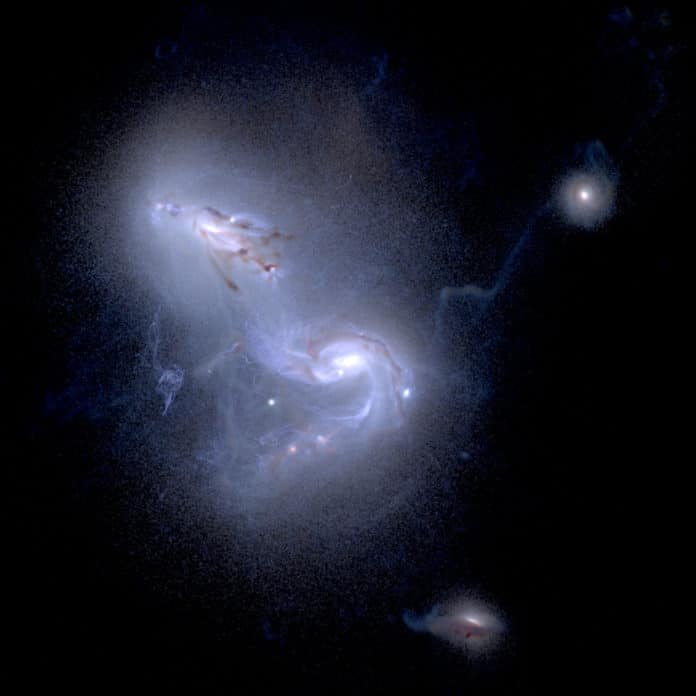The deeper we look into the cosmos, the more galaxies we see. Some galaxies are similar to the Milky Way, i.e., spiral galaxy, whereas some are quite different.
With the continuous evolution of the universe, galaxies also evolve. But it remains unclear- How do galaxies evolve into the starry spirals, as seen by telescopes.
Using the Pleiades supercomputer at the NASA Advanced Supercomputing facility at the agency’s Ames Research Center in California’s Silicon Valley and data from Hubble, scientists simulated a Milky Way-like galaxy in the early stages of a collision with another smaller galaxy.
Their visualization revealed fossil records of galaxy collisions and mergers. It reveals that- when we see the halo of stars and luminous clouds of interstellar dust surrounding a galaxy’s milky multitude, we are seeing remnants of smaller, neighboring galaxies. These remnants were shredded by galactic mergers that also throw many faint stars into enormous wide orbits.

These stars, hence land outside the galaxies’ far-flung fringes. Sometimes, these outlier stars form streams that wrap around a larger galaxy and last billions of years.
The resulting data is expected to help scientists make predictions about detecting and tracing the histories of stellar streams. These streams can tell about the galaxies that created them.
